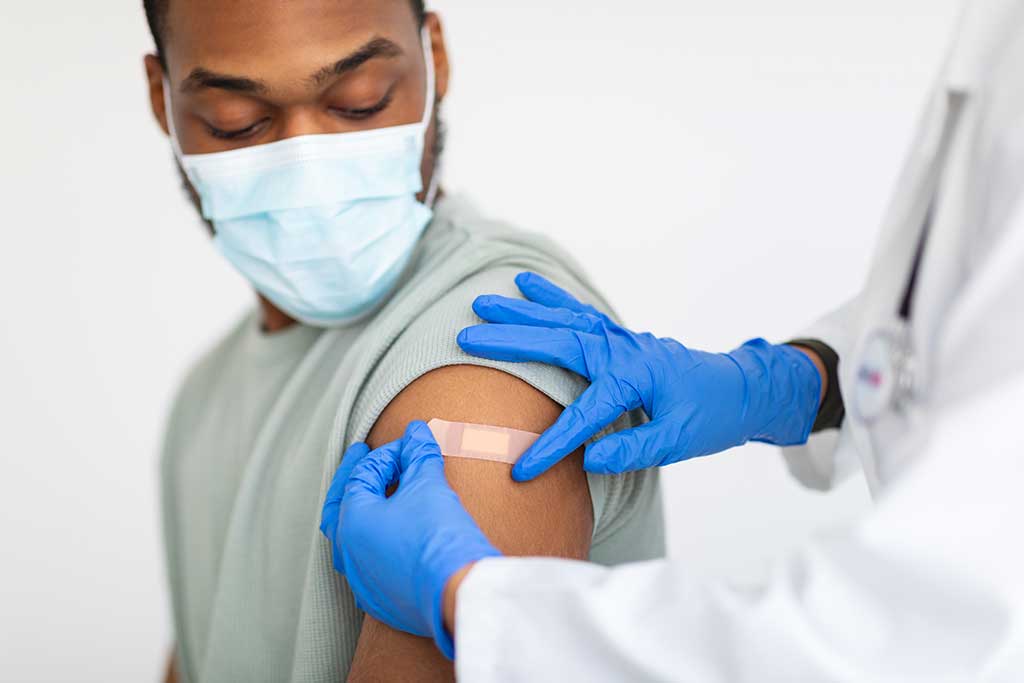
The Therapeutic Goods Administration (TGA) has approved seven influenza vaccines for use this year, all of which are quadrivalent.
Annual influenza vaccination is recommended for all people aged six months and older to prevent influenza infection and its complications. Influenza vaccines are available for free on the National Immunisation Program (NIP) for all children aged six months to five years and all adults aged 65 years and older. It is also funded for other specific populations with an increased risk of influenza complications (e.g. pregnant women, Aboriginal and Torres Strait Islander people, and people with certain medical conditions). Details on NIP eligibility can be obtained from the Department of Health.
The Australian Influenza Vaccine Committee (AIVC) made the following recommendations regarding the composition of influenza vaccines for the 2021 Southern Hemisphere season.
Egg-based quadrivalent influenza vaccines:
- A/Victoria/2570/2019 (H1N1)pdm09-like virus;
- A/Hong Kong/2671/2019 (H3N2)-like virus;
- B/Washington/02/2019-like (B/Victoria lineage) virus; and
- B/Phuket/3073/2013-like (B/Yamagata lineage) virus.
Cell-based quadrivalent influenza vaccines:
- A/Wisconsin/588/2019 (H1N1)pdm09-like virus;
- A/Hong Kong/45/2019 (H3N2)-like virus;
- B/Washington/02/2019 (B/Victoria lineage)-like virus; and
- B/Phuket/3073/2013 (B/Yamagata lineage)-like virus.
Cell-based vaccines
This is the first year that a cell-based influenza vaccine (Flucelvax®) has been made available in Australia. The cell-based manufacturing process uses mammalian cell cultures to grow the influenza virus instead of embryonated chicken eggs. The resulting vaccine is completely free of ovalbumin (egg protein) compared to traditional influenza vaccines, which may contain traces of ovalbumin. This may be reassuring for patients with an egg allergy, although the Australasian Society of Clinical Immunology and Allergy (ASCIA) advise that these patients can safely receive traditional influenza vaccines. The amount of ovalbumin contained in egg-based influenza vaccines has reduced over the years, with each dose currently containing less than 1µg. The ASCIA estimate that 130µg of egg protein (taken orally) is required to trigger a reaction in egg-allergic individuals.
There are a number of other potential advantages to growing the virus in mammalian cell cultures. Firstly, growing viruses in eggs requires very large numbers of embryonated eggs from pathogen-free flocks. Secondly, not all virus strains grow well in eggs. The H3N2 strain, in particular, may change when grown in eggs. This phenomenon, known as egg-adaptation, can occur when the virus is grown in eggs as the virus adapts to avian receptors in the egg. It is thought that this could contribute to reduced vaccine match and reduced vaccine efficacy. Therefore, growing the virus in mammalian cell cultures could potentially lead to improved vaccine efficacy.
This vaccine is not funded on the NIP.
Adjuvanted vaccines
Fluad® Quad is an adjuvanted vaccine that is available on the NIP for people 65 years of age and older. This vaccine contains the standard antigen dose but is formulated with an adjuvant to enhance the immune response. Fluad® Quad is preferred for older Australians as older people typically produce a weaker immune response to standard influenza vaccines. The increased response observed with Fluad® Quad is particularly pronounced for the A/H3N2 strain, which is more common and severe in older populations.
The Immunisation Handbook recommends that Fluad® Quad should not be co-administered with Shingrix®. Shingrix® is an adjuvanted zoster vaccine that is expected to be available in Australia from mid-2021.
Administration
Influenza vaccination should ideally occur before the start of the influenza season. In Australia, the peak influenza period is typically June to September. However, some experts suggest that the 2021 influenza season may start later due to fewer international travellers arriving.
Optimal protection against influenza is achieved in the three to four months after vaccination, although protection is generally expected to last throughout the year. The Australian Technical Advisory Group on Immunisation (ATAGI) advise that vaccination can continue to be offered as long as influenza viruses are circulating and a valid vaccine is available.
The recommended dose for all of the influenza vaccines registered in Australia is 0.5mL. A second dose is recommended for children younger than nine years of age who have not previously had an influenza vaccine and for people of any age who have recently had a haematopoietic stem cell transplant or solid organ transplant. If a second dose is required, it should be administered four weeks after the first dose.
A summary of vaccines registered for use in Australia this year is shown in Table 1.
Table 1. Influenza vaccines registered in Australia for 2021
| Influenza vaccine | Vaccine type | Indicated age group |
| Vaxigrip® Tetra | Egg-based | 6 months and over |
| Fluquadri® | Egg-based | 6 months and over |
| Fluarix® Tetra | Egg-based | 6 months and over |
| Fluad® Quad | Adjuvanted, egg-based | 65 years and over |
| Afluria® Quad | Egg-based | 5 years and over |
| Influvac® Tetra | Egg-based | 3 years and over |
| Flucelvax® Quad | Cell-based | 9 years and over |
The relevant product information should be consulted for further information.
References:
- Australasian Society of Clinical Immunology and Allergy. ASCIA Guidelines: vaccination of the egg-allergic individual. Balgowlah: ASCIA; 2017.
- Australian Technical Advisory Group on Immunisation. Influenza (flu). In: Australian Immunisation Handbook. Department of Health: Canberra; 2021.
- Australian Technical Advisory Group on Immunisation. Statement on the Administration of Seasonal Influenza Vaccines in 2021. Department of Health: Canberra; 2021.
- Rajaram S, Wojcik R, Moore C, Ortiz de Lejarazu R, de Lusignan S, Montomoli E, et al. The impact of candidate influenza virus and egg-based manufacture on vaccine effectiveness: literature review and expert consensus. Vaccine 2020; 38(38): 6407-56.
- Wu NC, Zost SJ, Thompson AJ, Oyen D, Nycholat CM, McBride R, et al. A structural explanation for the low effectiveness of the seasonal influenza H3N2 vaccine. PLOS Pathogens. 2017; 13(10): e1006682.
Subscribe Knowledge Centre Updates
Enter your details to receive Knowledge Centre updates
